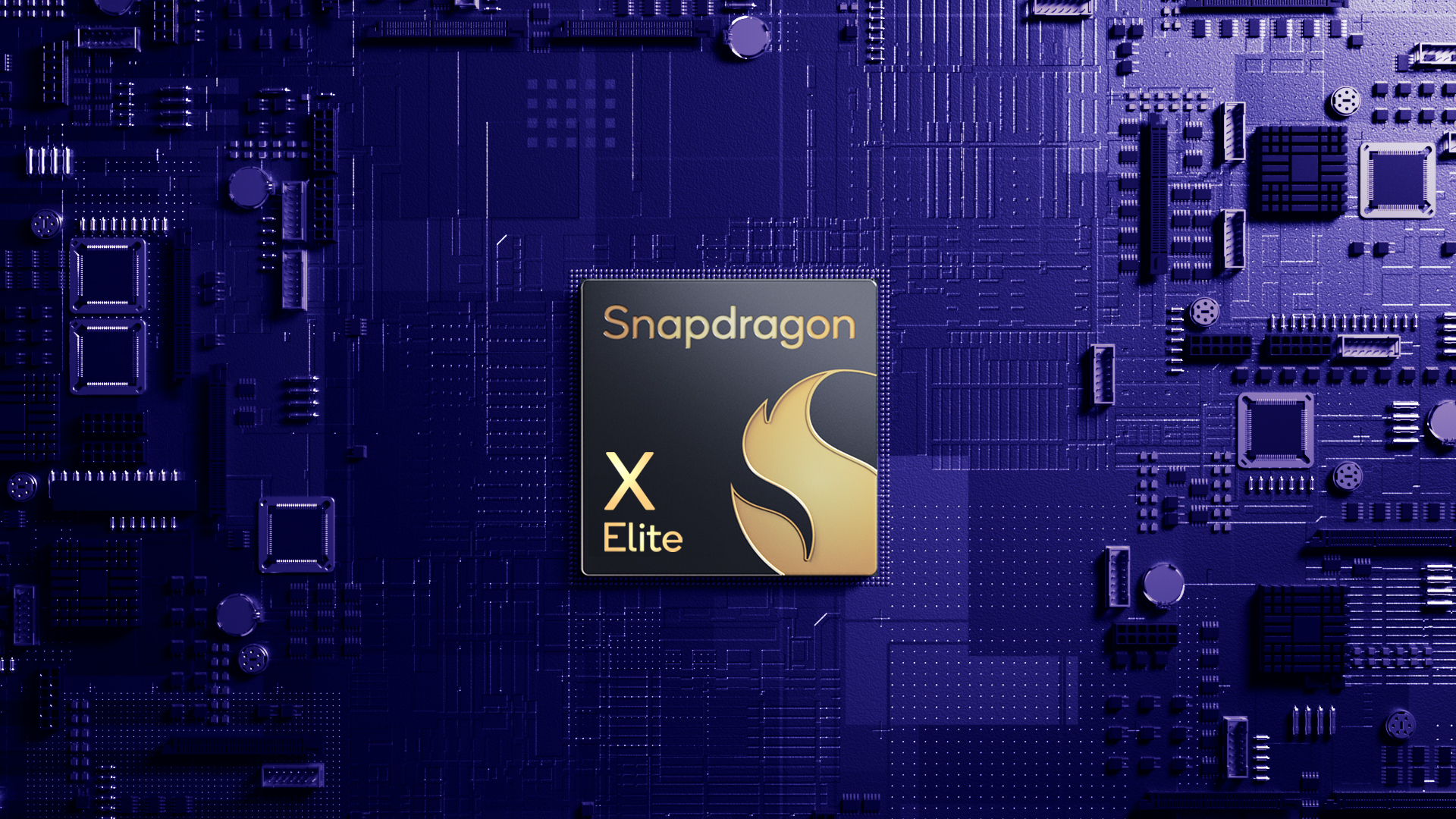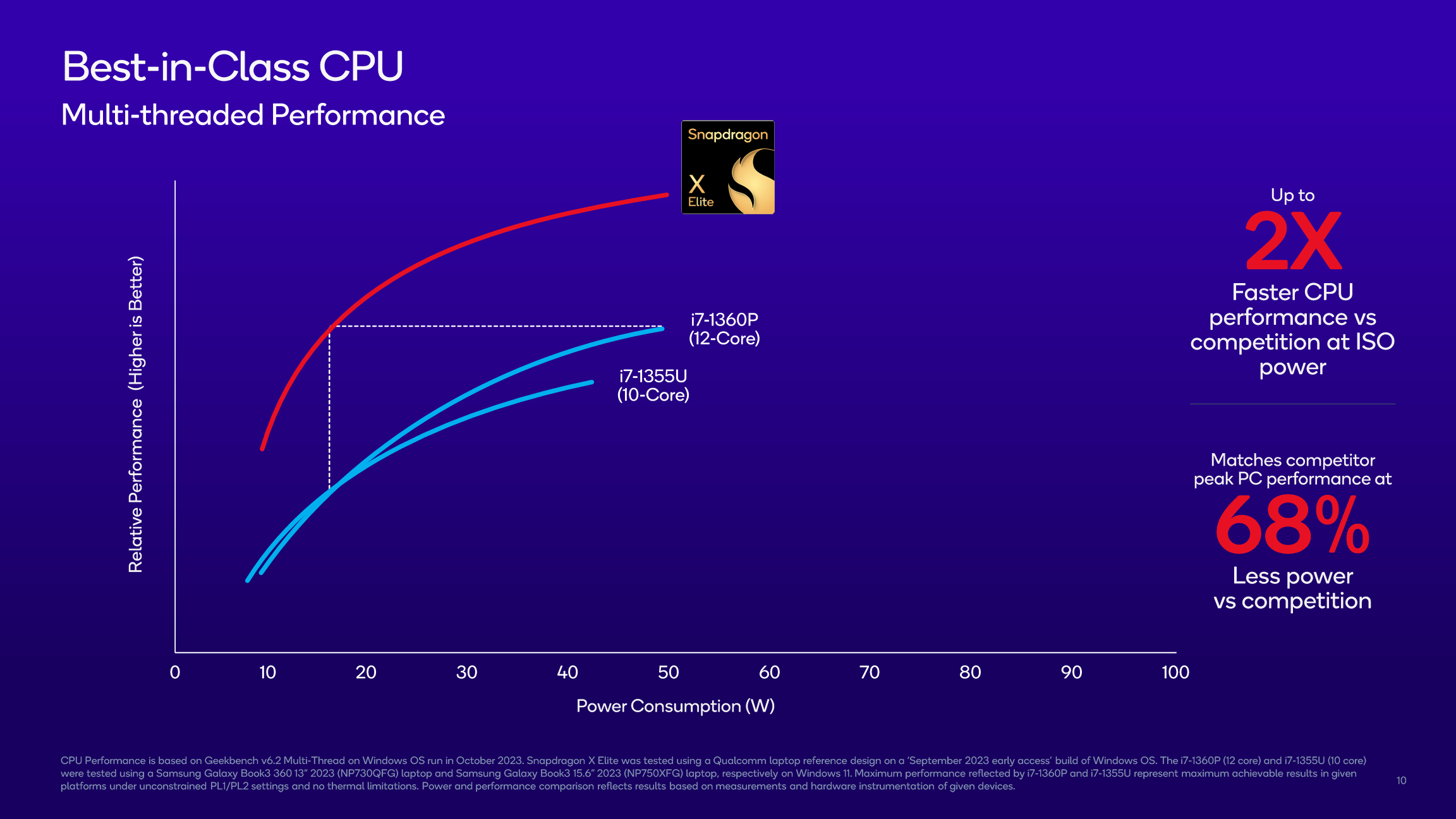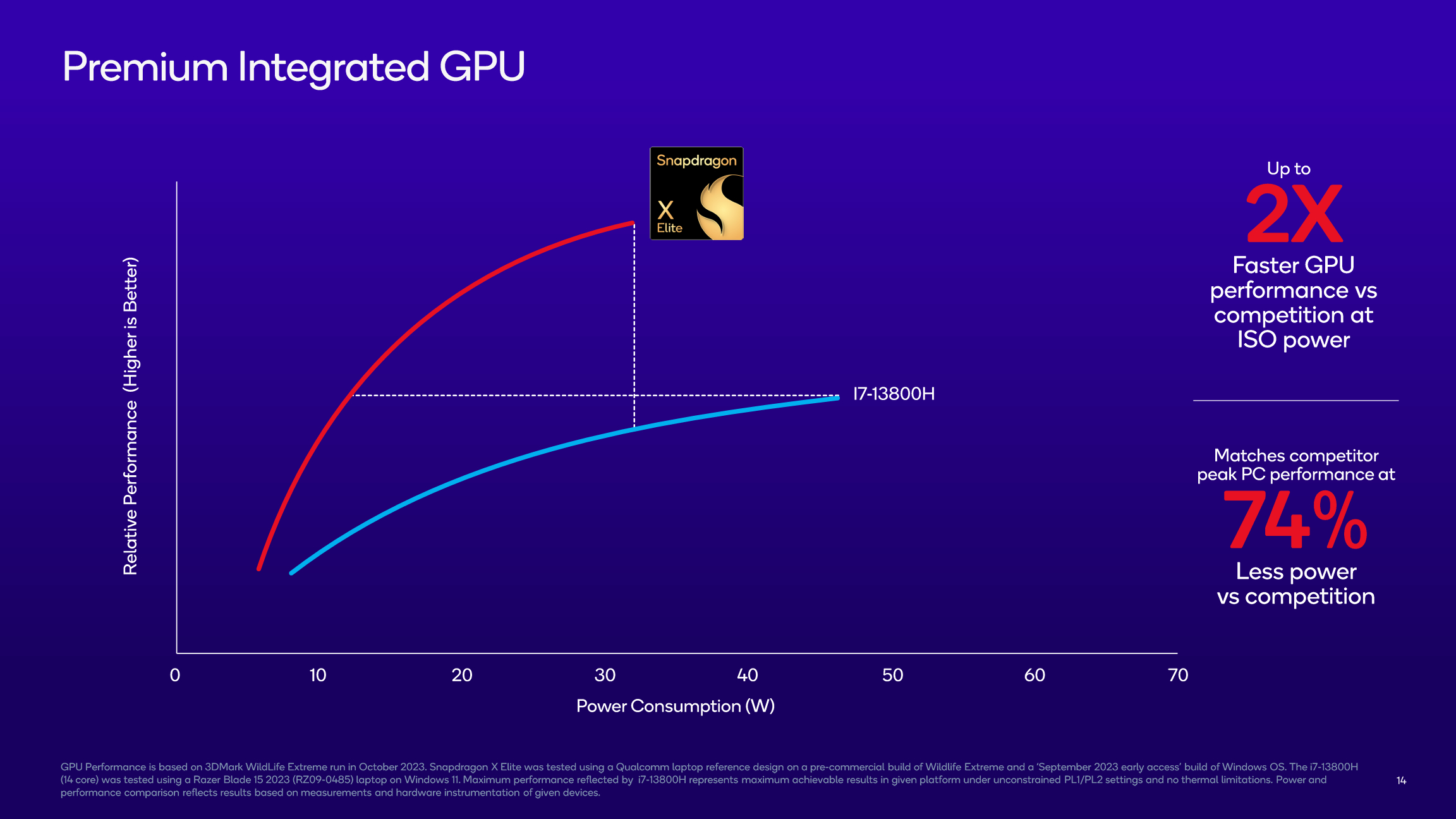Snapdragon X Elite release plans, specs, AI features and more
Qualcomm is gunning for Apple silicon

Snapdragon X Elite is gearing up to take on Intel and Apple’s processors starting next month. The new mobile platform features the custom-integrated Qualcomm Oryon CPU — which promises to deliver up to 2 times faster CPU performance than the competition at one-third the power.
Utilizing the Qualcomm AI Engine, Snapdragon X Elite can run generative AI models with over 13 billion parameters on-device. The company claims the mobile platform has 4.5 times faster AI processing than its competitors. In addition to facilitating one’s productivity and creativity, the platform also promises to deliver “multiple days of battery life,” according to Qualcomm.
We won’t see what Snapdragon X Elite can do for the best laptops until June 2024, but if the new Qualcomm chips live up to the company’s lofty promises, we could see a true rival to Apple’s M-series processors. If that happens, the best Windows laptops of the future could match the best MacBooks.
Here’s everything you need to know about Snapdragon X Elite. Also, read up on the Snapdragon X Plus, which is a lower-tier version of the X Elite.
Snapdragon X Elite: Latest news (updated May 20)
- The first Snapdragon X Elite laptops have been announced during Microsoft's Build event
- Qualcomm has announced the Snapdragon X Plus chip, which is 10% faster than M3
- Lenovo’s leaked Snapdragon X Elite laptop looks like a MacBook Air M3 killer — but something is missing
- Qualcomm says Snapdragon X Elite blows away Apple’s M3 chip with 28% faster performance
Snapdragon X Elite: Availability
The first Snapdragon X Elite laptops will launch in June 2024.
This includes notebooks like the HP OmniBook X, Lenovo Yoga Slim 7x, Acer Swift 14, Dell XPS 13 and a host of others from manufacturers like Asus, Microsoft and Samsung.
Snapdragon X Elite: Specs and performance
According to Qualcomm, Snapdragon X Elite is the “most powerful, intelligent, and efficient processor in its class for Windows.”
Get instant access to breaking news, the hottest reviews, great deals and helpful tips.
The chip is built on the same 4nm process as the announced Snapdragon 8 Gen 3. Snapdragon X Elite features 12 high-performance cores capable of hitting 3.8GHz — with dual-core boost up to 4.3GHz. Its CPU memory architecture has up to 136GB/s of bandwidth and 42MB total cache.
Qualcomm says the X Elite chip has up to two times faster CPU performance than competitors at the same power. As you can see in the graph above, said competitors are the 13th Gen Intel Core i7-1355U (10 cores) and i7-1360P (12 cores). The graph also claims that Qualcomm’s processor matches competitor peak PC performance at 68% less power than the aforementioned Intel CPUs. We see similar results when Qualcomm compares its upcoming chip against the Core i7-13800H (14 cores).
The integrated Adreno GPU supposedly “delivers stunning graphics for immersive entertainment.” It offers support for 4K displays at 120Hz and HDR10. It also has triple UHD (4K) and dual-5K external display support. This should be good news for those with multi-monitor setups.
According to the graph above, the Adreno GPU has up to 2 times faster integrated GPU performance than the Core i7-13800H CPU with its Intel Xe Graphics. The graph also claims Qualcomm’s processor matches its competitor’s peak PC performance at 74% less power. In comparison to the AMD Ryzen 9 7940HS, the graph shows up to 80% faster CPU performance and 80% less power consumption.
Qualcomm’s claims are impressive. However, we’ll need to get a laptop running on a Snapdragon X Elite chip into our testing lab to see how the best PC games run on those devices.
Snapdragon X Elite: Our own testing
We’ve put Snapdragon X Elite to the test ourselves with some benchmarks when we attended a recent event. What's interesting is that Snapdragon X Elite M3 beats Apple M3 in multi-core benchmarks — and beats the M3 Pro MacBook Pro, too.
| Chip (laptop) | Geekbench 6 (single-core) | Geekbench 6 (multicore) |
|---|---|---|
| Qualcomm Snapdragon X Elite (Reference design laptop) | 2864 | 15016 |
| M3 (MacBook Air) | 3082 | 12087 |
| M3 Pro (MacBook Pro) | 3154 | 14357 |
| M3 Max (MacBook Pro) | 3200 | 21711 |
| Intel Core Ultra 7 155H (Asus Zenbook Duo) | 2475 | 12867 |
| Intel Core Ultra 9 185H (Samsung Galaxy Book 4 Ultra) | 2421 | 13124 |
The table above shows how well X Elite performs at multi-threaded tasks. Qualcomm's chip seems like it will be more capable than not just Apple's lower and mid-tier chips, but also Intel's most performant Core Ultra chipset in the 9 185H.
Snapdragon X Elite: Qualcomm AI engine
Given the recent interest in AI, it’s not surprising that Qualcomm is emphasizing the AI and machine learning features of the Snapdragon X Elite. We heard similar discussions when the Snapdragon 8 Gen 2 chip was announced, but the company seems to be pushing AI even more this time around — which is par for the course these days in the tech industry.
Getting down to specifics, the Qualcomm AI Engine is powered by an upgraded Hexagon NPU capable of 45 TOPS (trillion operations per second). It’s capable of running generative AI LLM (large language models) over 13B parameters on-device at 4.5 times faster speeds than the competition, according to Qualcomm.

The updated Micro NPU inside the Qualcomm Sensing Hub features enhanced security, privacy, and the ability to wake the device when in sleep mode. The Qualcomm AI Engine also supports Windows Studio Effects and other AI-accelerated applications. Support for INT4 precision should also bolster performance-per-watt by 68%.
In simple terms, this should provide faster text responses and image generation when you're using AI. Qualcomm says its updated AI engine is faster than the competition, but we'll need to put that claim to the test ourselves.
Snapdragon X Elite: Outlook
The Snapdragon X Elite platform seems like a promising alternative to Intel and Apple’s processors, at least based on what Qualcomm provided. Raw computational power is great, but I personally want to see how devices packing an X Elite chip enhance the overall experience. Specifically, I’m interested in seeing how the updated Qualcomm AI Engine accelerates on-device AI workloads.
We need to wait until June to see what this new mobile CPU can really do. Stay tuned for further updates as we hear them.
More from Tom's Guide
- Samsung Galaxy S24 packs a souped-up Snapdragon 8 Gen 3
- I’m excited for the alleged Apple M2 rival, the Snapdragon 8cx Gen 4
- Meta Quest Pro — Qualcomm just signed on for ‘long haul’

Tony is a computing writer at Tom’s Guide covering laptops, tablets, Windows, and iOS. During his off-hours, Tony enjoys reading comic books, playing video games, reading speculative fiction novels, and spending too much time on X/Twitter. His non-nerdy pursuits involve attending Hard Rock/Heavy Metal concerts and going to NYC bars with friends and colleagues. His work has appeared in publications such as Laptop Mag, PC Mag, and various independent gaming sites.



